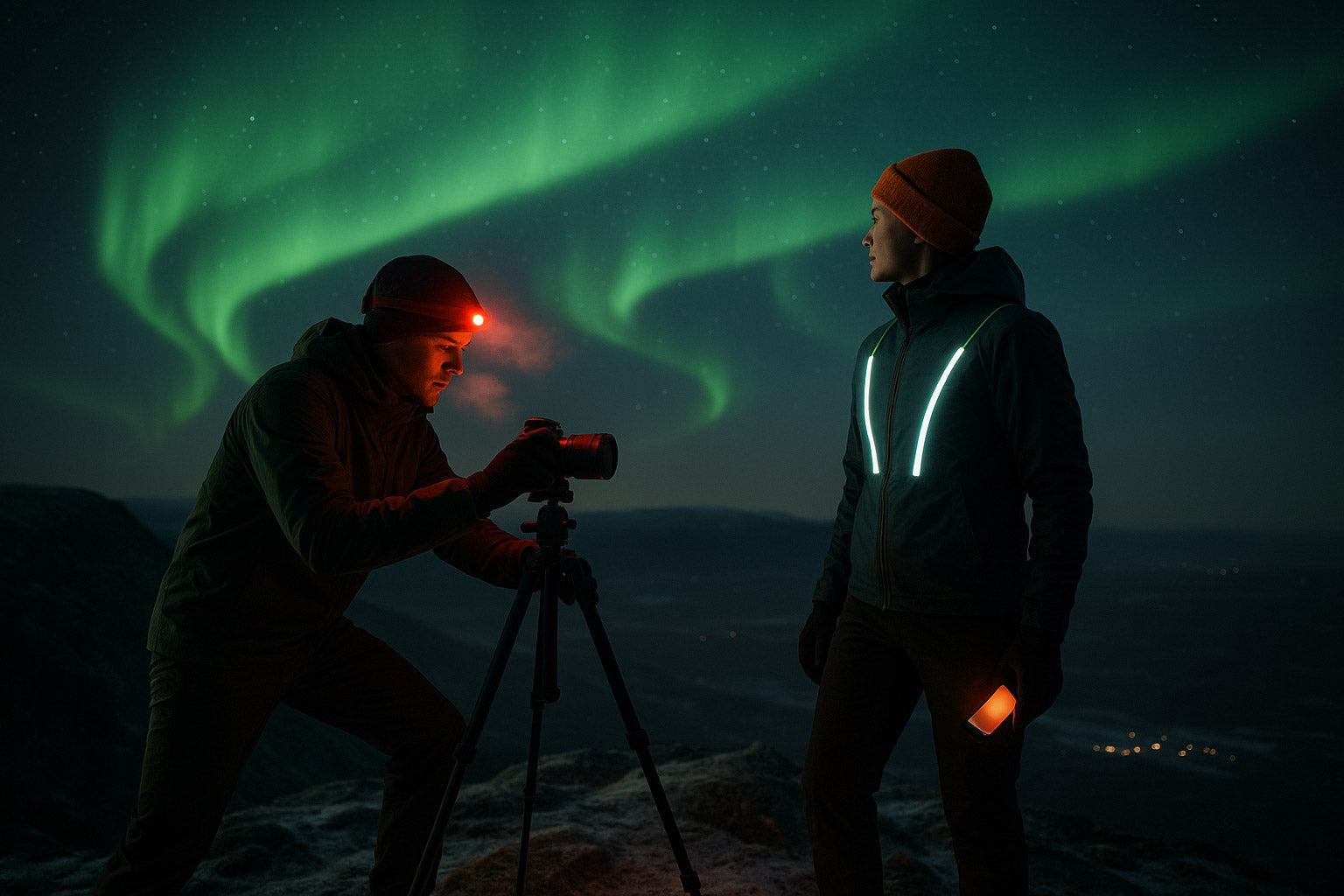
Noctourism Gear 2025: The Night-Hike & Aurora Checklist (Headlamps, Visibility, Heated Insoles)
Night doesn’t whisper. It hits. Empty roads, colder air, stars punching through the dark. Noctourism gear matters right now because 2025 is built for night hiking, stargazing, and chasing aurora windows. Solar Cycle 25 is firing. October sets the stage. This guide locks in the best headlamp 2025 picks, a real aurora borealis gear checklist, and the night hiking essentials that keep you fast, seen, and warm.
What is noctourism (and why 2025 is different)?
It’s simple. You go when others quit. You move after dark to dodge crowds, score colder temps, and line up the sky show. Noctourism in 2025 isn’t hype, it’s timing. Longer darkness. Peak aurora opportunity. Cooler nights for training. You want gear that pulls weight when visibility collapses and temps bite.
Safety first: brightness, beam patterns & red-light modes
Lumens matter, but beam quality decides control. A tight center spot with usable spill lets you read terrain without tunnel vision. Smooth transitions keep speed honest on rock, root, and snow.
How bright to run
- Hiking pace 200 to 400 lm
- Technical running or fast gravel 800 to 1500 lm
- Filming, sleds, ski laps, route finding 3000+ if you know what you’re doing
Red-light modes
Keep your rods working. Use a dim red for maps, camera settings, and camp chores so your night vision stays intact. Low output wins. Don’t blind your crew.
The ultimate night kit: headlamps, bike lights, visibility, layers, heated feet
Headlamps
- Budget and ultralight: SILVA Scout 3, 220 lm. Hybrid power, water resistant, dead simple. Backup or kid-friendly.
- Performance all-rounder: SILVA Free S, 1200 lm. Clean beam, modular, real training tool for trail runs or XC approaches.
- High-output use: SILVA Spectra A, 10,000 lm. Night-bike park laps, sled missions, or route work where failure isn’t invited. Heavy draw, serious heat.
Bike lights and being seen
- CycleZone NightStrike 700 set. 700 lm front, punchy rear, USB-C, quick mounts. Urban sprints to gravel connectors.
- NightPulse LED Visibility Vest. Fiber-optic LEDs plus reflective webbing so drivers register you early. A visibility vest for night cycling that actually stands out.
Layers that fight the chill
Start with a wicking base. Add active insulation. Seal it with a wind shell that packs tiny. Swap gloves as temps drop. Keep a dry beanie for the turn.
Heated feet
Cold toes end nights. Alpex ThermoRide Pro Heated Insoles keep blood moving through long, cold sessions. Thin profile, rechargeable, dialed heat.
Shop the categories
Aurora tips: apps, batteries in the cold, camera basics
Chase windows, not hype
Watch cloud cover, watch KP forecasts, then get outside. Patience beats headlines.
Battery reality in the cold
Cold murders runtime. Primary lithium AAs beat alkalines when temps tank. Keep spare camera and phone batteries in an inner pocket and rotate them. Never charge a frozen lithium-ion. Power banks ride inside your jacket, not on the outside of your pack.
Camera basics that actually matter
Tripod. Manual focus near infinity, confirm with live view. Shutter 2 to 10 seconds depending on aurora speed. ISO 800 to 3200. Aperture wide open. Kill flash. Use your headlamp’s red mode to preserve night vision while you dial settings. Phones can work if you lock exposure and brace hard.
Quick packing lists: hikers, cyclists, family campers
Night hikers
- Headlamp with red mode, plus a backup micro light
- Spare batteries or power bank, map, whistle
- Base layer, active-insulation mid, wind shell
- Hat, glove system, simple snacks you can open with gloves
- Optional picks: SILVA Scout 3, SILVA Free S, ThermoRide Pro
Night cyclists
- 700 lm front minimum, bright rear, both steady and flash options
-
NightPulse LED Visibility Vest, reflective ankle bands
- Windproof jersey or shell, thin insulated gloves, toe covers or ThermoRide Pro
- Flat kit, ID, route loaded
- Two fronts if you’re pushing speed, one flood plus one spot
Family campers
- One headlamp per person with red light, one lantern for camp
- Spare cells in a zip bag, thermos, throw blanket
- Phone with long-exposure app or a simple camera
- Hot cocoa packets, instant soup, chemical hand warmers
- Low-lumen kids’ lights for tent games
Inline picks worth your cart
- SILVA Scout 3, 220 lm
- SILVA Free S, 1200 lm
- SILVA Spectra A, 10,000 lm
- NightPulse LED Visibility Vest
- Alpex ThermoRide Pro Heated Insoles
FAQs
What lumen level is best for night hiking vs. stargazing?
For steady hiking, 200 to 400 lm with a mixed spot plus flood is clean. For running or biking, 800 to 1500 lm stabilizes speed. For stargazing, drop to the lowest white or switch to dim red so your eyes stay adapted.
Why use red light modes for aurora viewing?
Dim red preserves dark adaptation so your eyes keep pulling detail while you tweak settings, frame shots, or sort layers. Keep it low, not bright.
How do I keep batteries alive below freezing?
Use primary lithium cells for better low-temp performance, stash spare camera and phone batteries in an inner pocket, rotate through the night, and never charge a frozen lithium-ion.
- Choosing a selection results in a full page refresh.
!
